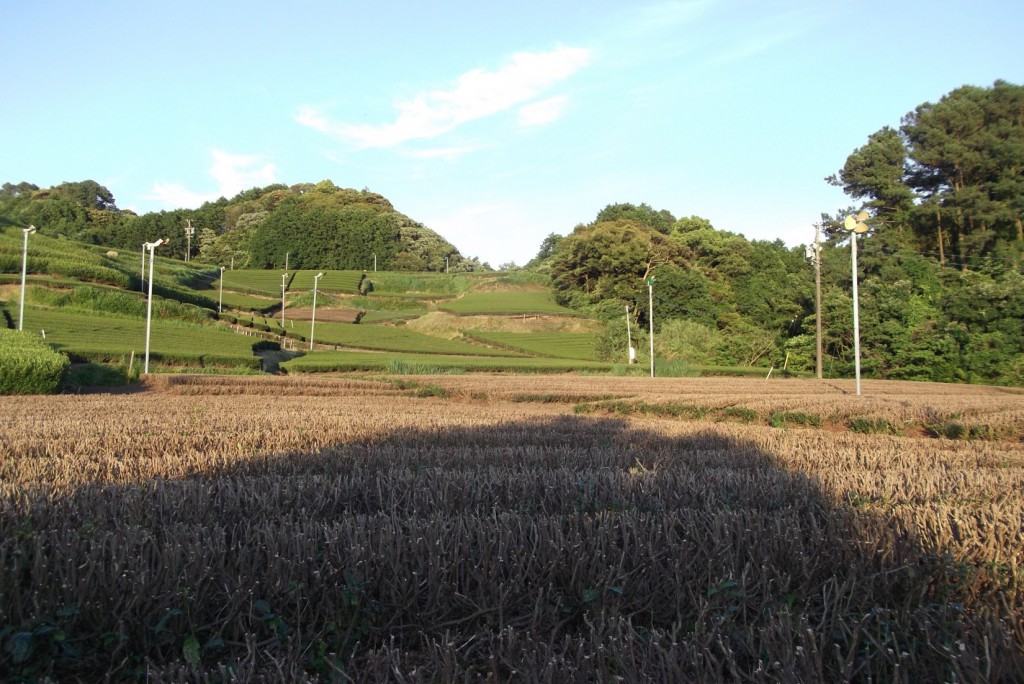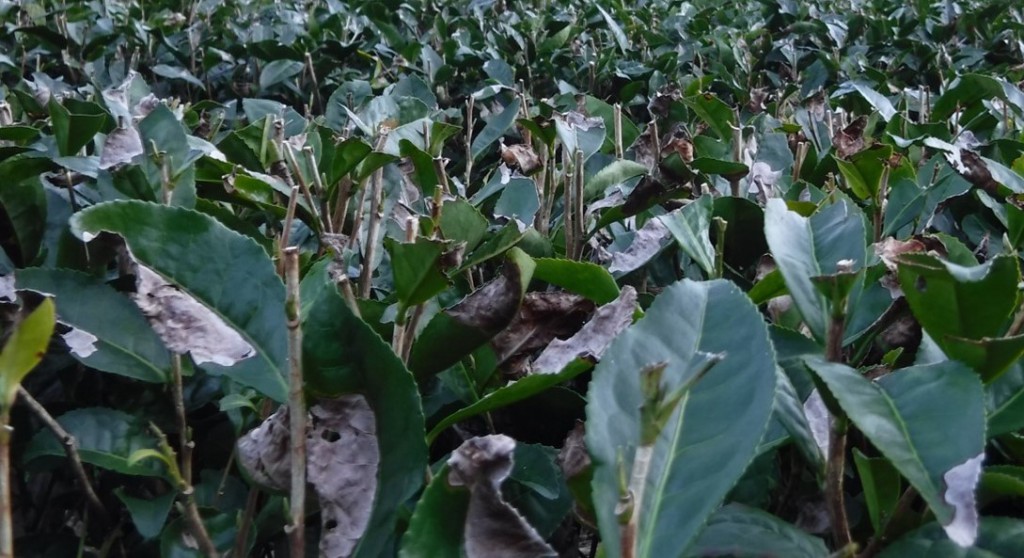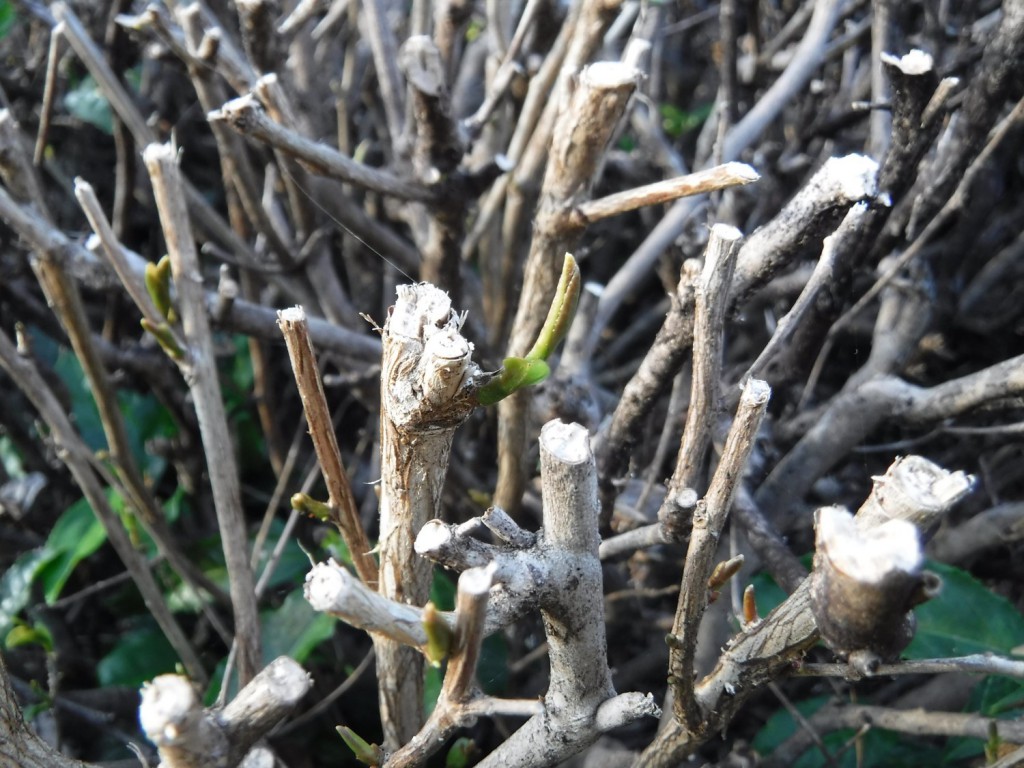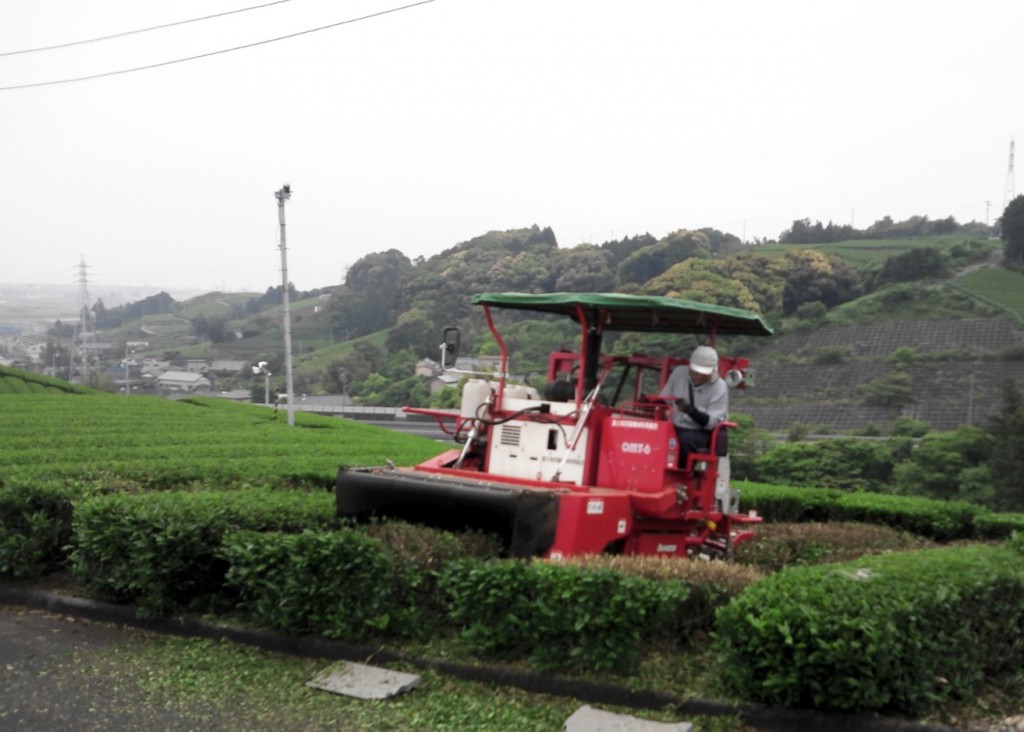After the first flush season, pruning or deep trimming is carried out in some tea plantations, where the height of tea canopy is higher than the maximum level of plucking or the vigor of tea plants is reduced by some reasons.

Tea plantation after pruning.
Deep trimming is one of the most important cultural controls for tea plantation. This management removes the layer of leaves infected by some diseases such as Anthracnose.

Tea leaves infected by Anthracnose.
Thus the opportune pruning can prevent the pest from spreading, as well as the case of insect pest reported by Hazarika et al.[340]. Especially organic cultivation, which cultivate tea plants without any agrichemicals, requires the opportune pruning in the appropriate depth.
After pruning, tea plants require enough amount of water and nutrients due to their subsequent metabolisms such as differentiation occurring in the top part of pruned branches and growth of feeder roots in rhizosphere.
3 weeks after pruning, new shoots generated on the top of pruned branches are observed as shown in the below.


These shoots will be plucked on July, in general on the middle of July, and mainly processed to the ingredients for ready-to-drink. At the harvest time, tea farmers take care on the timing and height of plucking to construct bigger and more vigorous leaves on the tea canopy in order to maximize their photosynthetic assimilation rate.
I’m looking forward to seeing the vigorous leaves grown on the tea canopy in July.
<Reference>
[340] Hazarika L.K. et al. (2009) : Insect Pest of Tea and Their Management, Annual Review of Entomology 54:267-284.

